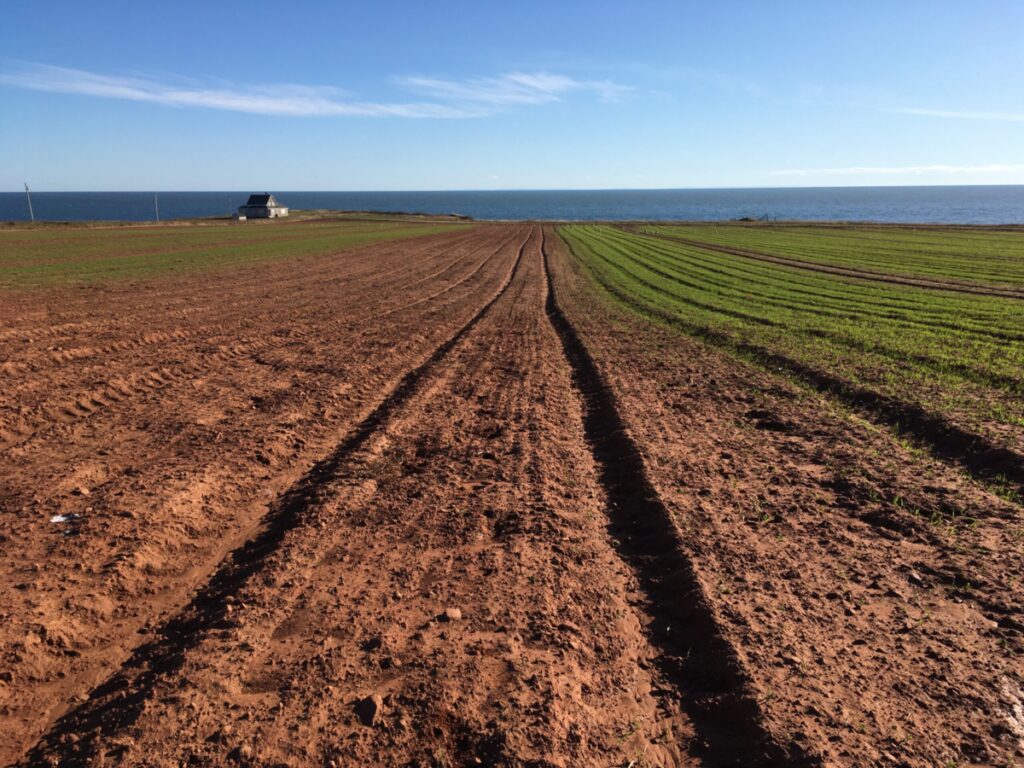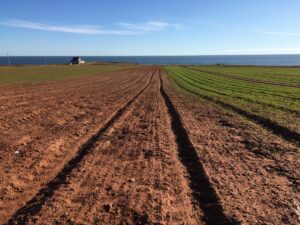
PEI fall cover crop research yields promising results
For generations, Prince Edward Island (PEI) has been known for potatoes. Canada’s smallest province continues to grow the largest acreage of potatoes in the country and a rich history of innovation and success in potato production.
The red, sandy-loam soil, high annual rainfall (40-plus inches of annual precipitation), and cold winters (to break pest and disease cycles) have historically been key factors in the growth of the industry, though these three same environmental factors also make PEI soils vulnerable to erosion.
In a root crop production system that requires soil disturbance, this has resulted in loss of top soil throughout the years. This not only impacts the productivity of those eroded fields but also has a detrimental impact on PEI waterways and wetlands.
In recent years, there have been significant efforts to minimize soil erosion in the potato industry. Erosion control structures such as grassed waterways, berms and terraces have become common sights across the province. Additionally, many producers have reduced tillage frequency or adopted vertical/residue tillage implements.
However, one of the most effective measures in combating erosion has been the increasing adoption of fall cover crops.

Under the Living Labs Atlantic initiative, funded by Agriculture & Agri-Food Canada, two projects were conducted by the Prince Edward Island Potato Board to explore the use of fall- seeded cover crops in potato rotations. The first project (BMP1) focused on cover crops planted after tillage in the year preceding potato planting.
Traditionally, forage fields have been plowed in late fall, leaving the soil bare over winter. To evaluate the benefits of earlier tillage and cover cropping, field-scale trials were conducted from 2019 to 2022. The choice of cover crop species varied, including spring cereal crops like barley, oats, and wheat, as well as brassica crops like oilseed radish, daikon radish and brown mustard.
Data was collected on various variables, such as soil health, compaction, erosion potential, soil nitrates, biomass, and potato yield and quality.
Key research findings
The choice of cover crop species did not significantly affect the percentage of green cover when planted in late August or early September. However, as the planting date moved later into September, cereal species performed better.
The presence of a cover crop resulted in a 36% reduction in accumulated soil in splash pans compared to the no cover crop treatment.
Cover crops significantly reduced soil nitrate levels in late fall, indicating their ability to absorb vulnerable nitrate, which could otherwise leach in PEI’s sandy soil with high fall precipitation.
Soil organic matter did not show significant differences between cover crop and control treatments in one year, but there was a trend toward higher levels of active carbon and biological nitrogen availability after cover crop treatments.
Cover crops did not have a significant impact on root lesion nematode or Verticillium dahliae populations, nor on soil compaction.
Over three years of trial data, cover crops resulted in a 32 cwt/acre increase in marketable yield, representing an 11% increase in yield and a $536/ acre increase in crop value. These results align with previous studies in Ontario and the UK related to yield improvement following cover crops in potato or tomato rotations.
Concurrently, the Prince Edward Island Potato Board conducted surveys to assess the adoption of cover crops and other regenerative agriculture practices. From 2019 to 2022, the adoption of cover crops in the year before potatoes increased from less than 25% to 49% of potato acres. This growth is a testament to the value of grower-directed research and agronomy extension efforts.
Postharvest investigation
Another project (BMP2) investigated the use of fall-seeded cover crops following potato harvest. While the adoption rate of post-potato cover crops is more common in PEI, there is still much to learn about best management practices for these cover crops.
Cereal crops, both spring and fall varieties, were primarily used in these trials. Winter barley and winter wheat showed better performance in terms of green cover, while fall rye demonstrated the highest cover percentage when planted after Oct. 5. Winter barley survival was poor, limiting its adoption as a cash crop in PEI. However, fall rye and winter wheat consistently exhibited strong winter survival rates.
The project also explored different seeding rates and establishment methods. Higher seeding rates did not significantly improve green cover percentage, suggesting that effective fall cover crops can be established while keeping seed costs down. Similar to the before potato project, the fall cover crops after potato harvest showed reductions in soil erosion potential and soil nitrates, although to a lesser extent because of later establishment.
These findings provide confidence to potato producers in PEI that fall- seeded cover crops offer short-term and long-term benefits to both the environment and their operations. Further research into the long-term effects of cover crop usage is proposed under the Agricultural Climate Solutions Living Labs program in PEI, starting later in 2023.
The research team acknowledges the support and funding provided by the East Prince Agri-Environmental Association, Agriculture & Agri-Food Canada, the PEI Department of Agriculture, Cavendish Farms, and Prince Edward Island potato producers to these projects.














